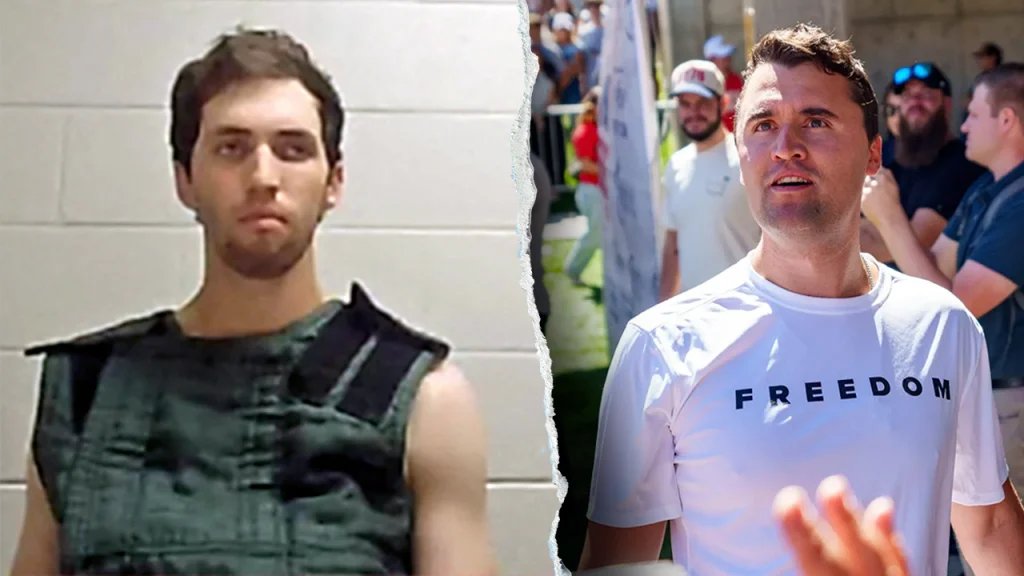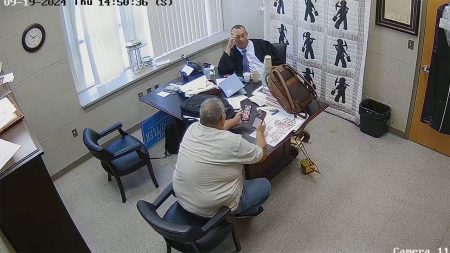Hidden Defendant in Charlie Kirk Assassination Case Raises Transparency Concerns
In an unusual move drawing significant criticism from legal experts, the man accused of assassinating Turning Point USA founder Charlie Kirk is being kept off-camera during court hearings, raising serious questions about judicial transparency in one of Utah’s most high-profile cases.
Tyler Robinson, the 22-year-old charged with shooting Kirk during an event at Utah Valley University last month, has effectively vanished from public view since his initial court appearance. The decision by Judge Tony Graf to allow virtual, audio-only hearings has sparked concerns about court transparency and the public’s right to observe justice in action. “If the public can’t see who’s speaking in a courtroom, that’s a serious transparency issue,” noted legal analyst Randolph Rice, highlighting how foundational open proceedings are to the American justice system. This unusual approach has even led some courtroom observers to question whether it was actually Robinson’s voice they heard during remote hearings, as there’s no visual confirmation of his identity during these proceedings.
The court has made several accommodations that appear designed to protect Robinson’s image, including postponing an in-person hearing until January, permitting him to wear civilian clothes in future court appearances, and blocking news photographers from capturing images of his restraints or his movements into and out of the courtroom. While Judge Graf denied a motion to have Robinson appear without restraints altogether, the comprehensive effort to manage his public presentation has raised eyebrows. As criminal defense attorney Joshua Ritter observed, “There seems to be an inordinate concern with his public perception… Great lengths are being made to make sure his presumption of innocence is maintained for the general public.” This delicate balancing act between protecting Robinson’s rights and maintaining public transparency represents a challenge for Judge Graf, who was only appointed to the bench earlier this year.
Experts suggest the judge may be acting with extreme caution to avoid potential grounds for appeal, but they warn this approach comes at a significant cost. “The judge is being extremely cautious to avoid an appeal for unfairness later by the defendant,” Rice explained, “But while doing that, he is sacrificing transparency and that is a dangerous trade-off in a case this public.” The prosecution has also requested that all future non-evidentiary hearings be conducted virtually, potentially further limiting public access to Robinson’s court proceedings. While judges do have discretion regarding what the public can observe in courtrooms, the extraordinary measures in this case have prompted legitimate questions about whether the scales have tipped too far away from transparency.
The absence of visual confirmation of Robinson’s identity and participation in his own hearings creates a troubling precedent, particularly in a case of this magnitude. The suspected assassination of a prominent political figure naturally draws intense public interest, and the lack of visual access to the accused feeds into a problematic information void. As Rice warned, “Keeping a defendant completely off camera for too long in a high-profile case like this only fans the flames of conspiracy. Conspiracies are born out of a lack of information, allowing the public to draw their own conclusions, no matter how far-fetched or unfounded.” This concern highlights the delicate balance courts must maintain between protecting a defendant’s rights and preserving the public’s trust in the justice system.
Robinson has not yet entered a plea, and his preliminary hearing – where the defense would challenge the evidence used in his arrest and cross-examine state witnesses – has been postponed until January at the earliest, with the possibility of further delays. This continued postponement means the public may not get another glimpse of the accused assassin for months, further exacerbating transparency concerns. The careful handling of Robinson’s case illustrates the complex considerations judges face in high-profile criminal matters, where public interest, media scrutiny, and the defendant’s rights all intersect. As this case progresses, legal observers will continue to monitor whether Judge Graf’s approach successfully navigates these competing interests or if the scales of justice have tipped too far toward secrecy at the expense of public transparency.











